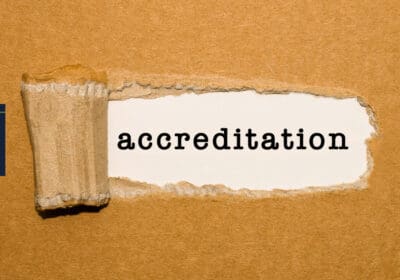The Strategic Advantage of Second-Pass Coding in Risk Adjustment: Unlocking Accuracy and Mitigating Audit Risk

In the complex world of healthcare, accuracy and compliance are not just priorities—they’re necessities. For health plans and provider organizations operating in value-based models, particularly those relying on risk adjustment methodologies such as the CMS Hierarchical Condition Category (HCC) model, the integrity of diagnosis coding is foundational. That’s where second-pass coding plays a pivotal role and where HLTHWorks is jumping in to support its clients.
What Is Second-Pass Coding?
Second-pass coding is a quality assurance layer added after the initial coding of medical records. This process involves a secondary, often more specialized review of clinical documentation to ensure that all relevant diagnoses—especially chronic conditions—are appropriately captured and coded. Increasingly, this pass leverages advanced technologies like Natural Language Processing (NLP) to support the identification of potential missed diagnoses and documentation gaps. The industry finds a strong ROI in second pass HCC coding, plus audit risk mitigation. Here’s why over 80% of the industry is doing second pass coding.
1. Improved Accuracy and Completeness
Risk adjustment relies on the accurate capture of a patient’s disease burden. One of the biggest challenges in the first-pass coding process is the potential for under-coding or missing diagnoses that impact risk scores. Second-pass coding serves as a critical safety net. Whether it’s catching a missed condition or identifying an improperly coded diagnosis, the second review helps ensure that every clinically relevant condition is identified, documented, and coded in alignment with official guidelines.
Example:
A first-pass coder may overlook a chronic kidney disease diagnosis documented in the assessment section of a note. A second-pass review, supported by NLP, can highlight this omission and ensure the appropriate HCC code is captured.
2. Chronic Disease Capture: A Strategic Focus
Chronic conditions like diabetes, heart failure, and COPD significantly influence risk scores and resource allocation. Second-pass coding prioritizes the detection and validation of these conditions, recognizing their long-term impact on patient outcomes and plan reimbursement.
By systematically confirming the presence of chronic diseases in medical records—and ensuring they meet CMS documentation requirements (e.g., MEAT criteria: Monitor, Evaluate, Assess/Address, and Treat)—second-pass coding prevents underrepresentation of patient complexity.
3. Enhanced Risk Adjustment Accuracy
An accurate risk score depends on complete and valid diagnosis coding. Without thorough capture of a patient’s health status, health plans may receive insufficient payment relative to the care needed. Second-pass coding supports:
- Fair and accurate reimbursement
- Equitable resource allocation for high-risk patients
- Performance benchmarking accuracy for value-based care contracts
When chronic conditions are missed or under-coded, not only are risk scores understated, but the ability to proactively manage populations also suffers.
4. Risk Mitigation: Reducing Exposure to Audits
CMS and other regulatory bodies increasingly scrutinize risk adjustment submissions through Risk Adjustment Data Validation (RADV) audits. These audits evaluate whether submitted diagnoses are supported by documentation in the medical record.
Second-pass coding mitigates audit risk by:
- Verifying that each diagnosis has corresponding, compliant documentation
- Highlighting unsupported or non-compliant entries for correction
- Ensuring that clinical documentation meets CMS criteria before data is submitted
The Result? Greater defensibility during audits and a lower likelihood of costly payment retractions or penalties.
5. Compliance with CMS Guidelines
CMS guidelines for risk adjustment coding are specific and evolving. Second-pass coding ensures organizations stay aligned with these expectations by embedding up-to-date compliance checks into the review process.
Key compliance areas include:
- Documentation that supports the presence of the condition (not just a mention)
- Evidence that the condition was monitored, evaluated, assessed/addressed, or treated during the encounter
- Accuracy in linking diagnosis codes to relevant encounters and services
By embedding these standards into the second-pass workflow, organizations reduce the risk of non-compliance and position themselves for long-term program success.
Final Thoughts: Second-Pass Coding as a Strategic Investment
In a healthcare landscape increasingly driven by data and accountability, second-pass coding is not merely a tactical step—it’s a strategic safeguard. It enhances the precision of risk adjustment, ensures compliance with regulatory standards, supports fair payment, and protects against audit risks.
For organizations serious about data integrity, clinical accuracy, and sustainable performance in risk-adjusted programs, second-pass coding is not optional—it’s essential. Contact HLTHWorks for high value 2nd pass coding and risk mitigation.
Related Posts

From Good to Great: Why Accreditation Matters for Health Plans
In today’s dynamic healthcare landscape, accreditation is more than a regulatory checkbox—it’s a strategic imperative.…

Preparing for CMS RADV Audits: A Proactive Playbook for Health Plan Compliance
As CMS intensifies its Medicare Advantage Risk Adjustment Data Validation (RADV) audits—vowing to review every…

Business Transformation: The Courage to Change Everything & The Discipline to Do It Well.
At HLTHWorks, we believe business transformation is more than a buzzword — it’s a bold,…
